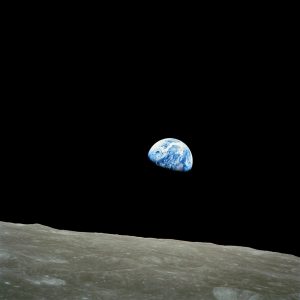It’s a weird and wonderful cosmic family.
That’s Dinky for you
Last year, images taken by NASA’s Lucy spacecraft revealed that a small moon orbiting an asteroid called “Dinky” is, in fact, two small moons fused together.
The discovery baffled scientists, who had never seen this type of satellite, known as a contact binary, orbiting an asteroid.
But thanks to new research, we may be closer to piecing together the strange cosmic puzzle. A new NASA study about the strange Dinky discovery, published this week in the journal Nature, hypothesizes that the medium-sized asteroid likely gave birth to one or both of the mini-moons — collectively called “Salam” — itself. Cosmic twins!
The NASA researchers behind the study believe the findings offer a fascinating new look into the mysterious and surprisingly elaborate world of the smallest cosmic bodies.
“There is a lot more complexity to these small bodies than we first thought,” University of Maryland astronomy professor and study co-author Jessica Sunshine said in a statement.
Cosmic Dance
At the time of Lucy’s visit to Dinky – named Dinkinesh – in November 2023, it was the smallest body ever closely examined by mankind within the main asteroid belt between Mars and Jupiter.
At first, like Space.com reported at the time, Dinky was believed to be a type of binary contact—a not-so-rare phenomenon in which two celestial bodies orbit each other in an extremely close cosmic dance. But when scientists took a closer look at Salam, they were shocked to discover that the satellite was a strange and unprecedented contact binary. WITHIN a contact binary. Or, how Space.com most recently, a “binary-asteroid-moon-contact situation”.
Examination of Dinky’s surface, however, appears to have shed some light on the rare collision. As explained in the study, astronomers believe that the small asteroid began spinning fast enough to break off some of its loosely bound material. Some of this material remained in orbit around the new space rock and melted into two separate small satellites.
How the moons later merged into one is still a mystery, but it’s likely that they got closer over time until they eventually merged.
We wish this extremely strange celestial family all the best – and, to Sunshine’s point, we hope this research leads to further studies into the strange world of smaller space rocks down the line.
More about the space: Astronomers discover epic lava flows flowing from Venus
#Astronomers #amazed #find #small #moon #small #moons #coat
Image Source : futurism.com



